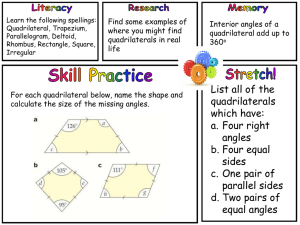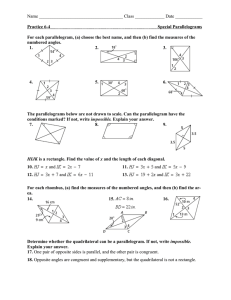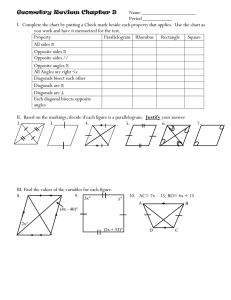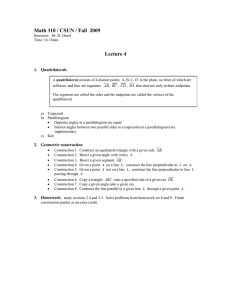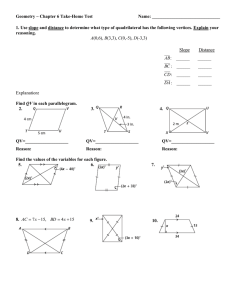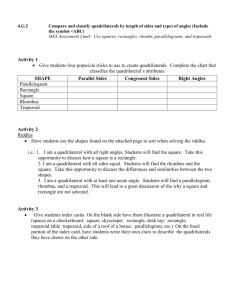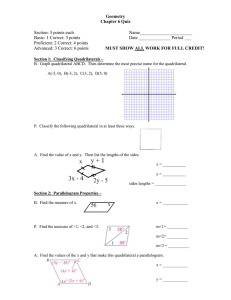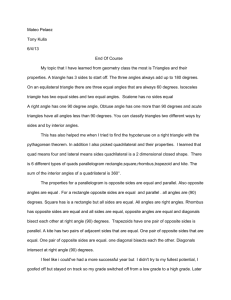Math 310 / CSUN / Fall 2009 Lecture 8
advertisement
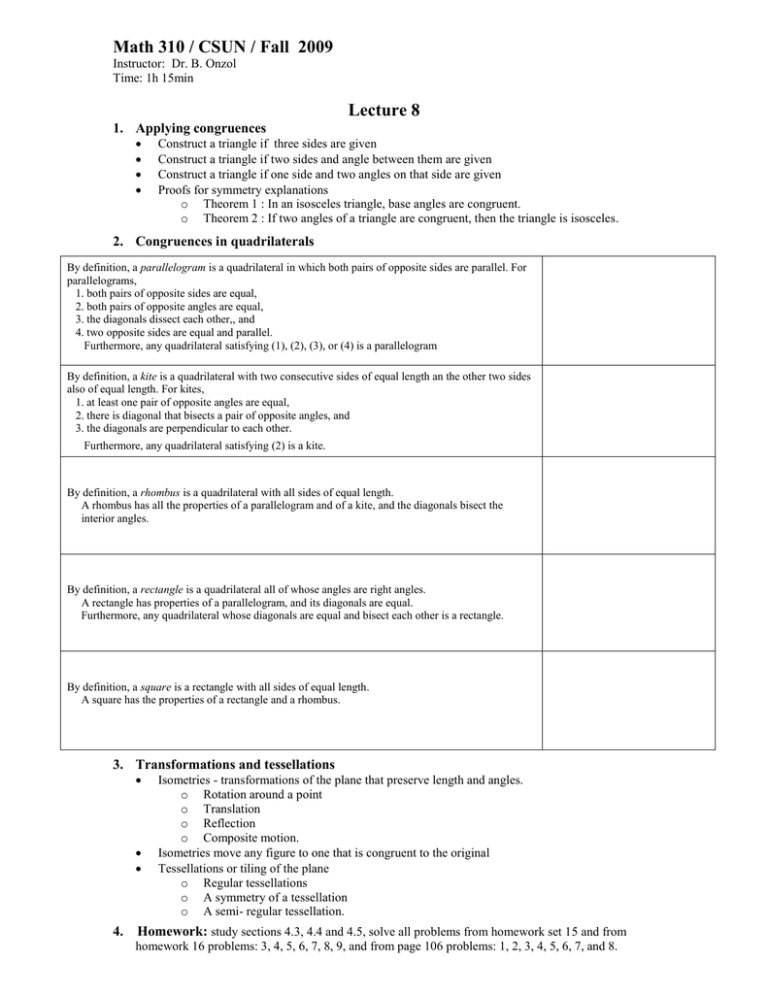
Math 310 / CSUN / Fall 2009 Instructor: Dr. B. Onzol Time: 1h 15min Lecture 8 1. Applying congruences Construct a triangle if three sides are given Construct a triangle if two sides and angle between them are given Construct a triangle if one side and two angles on that side are given Proofs for symmetry explanations o Theorem 1 : In an isosceles triangle, base angles are congruent. o Theorem 2 : If two angles of a triangle are congruent, then the triangle is isosceles. 2. Congruences in quadrilaterals By definition, a parallelogram is a quadrilateral in which both pairs of opposite sides are parallel. For parallelograms, 1. both pairs of opposite sides are equal, 2. both pairs of opposite angles are equal, 3. the diagonals dissect each other,, and 4. two opposite sides are equal and parallel. Furthermore, any quadrilateral satisfying (1), (2), (3), or (4) is a parallelogram By definition, a kite is a quadrilateral with two consecutive sides of equal length an the other two sides also of equal length. For kites, 1. at least one pair of opposite angles are equal, 2. there is diagonal that bisects a pair of opposite angles, and 3. the diagonals are perpendicular to each other. Furthermore, any quadrilateral satisfying (2) is a kite. By definition, a rhombus is a quadrilateral with all sides of equal length. A rhombus has all the properties of a parallelogram and of a kite, and the diagonals bisect the interior angles. By definition, a rectangle is a quadrilateral all of whose angles are right angles. A rectangle has properties of a parallelogram, and its diagonals are equal. Furthermore, any quadrilateral whose diagonals are equal and bisect each other is a rectangle. By definition, a square is a rectangle with all sides of equal length. A square has the properties of a rectangle and a rhombus. 3. Transformations and tessellations Isometries - transformations of the plane that preserve length and angles. o Rotation around a point o Translation o Reflection o Composite motion. Isometries move any figure to one that is congruent to the original Tessellations or tiling of the plane o Regular tessellations o A symmetry of a tessellation o A semi- regular tessellation. 4. Homework: study sections 4.3, 4.4 and 4.5, solve all problems from homework set 15 and from homework 16 problems: 3, 4, 5, 6, 7, 8, 9, and from page 106 problems: 1, 2, 3, 4, 5, 6, 7, and 8.
